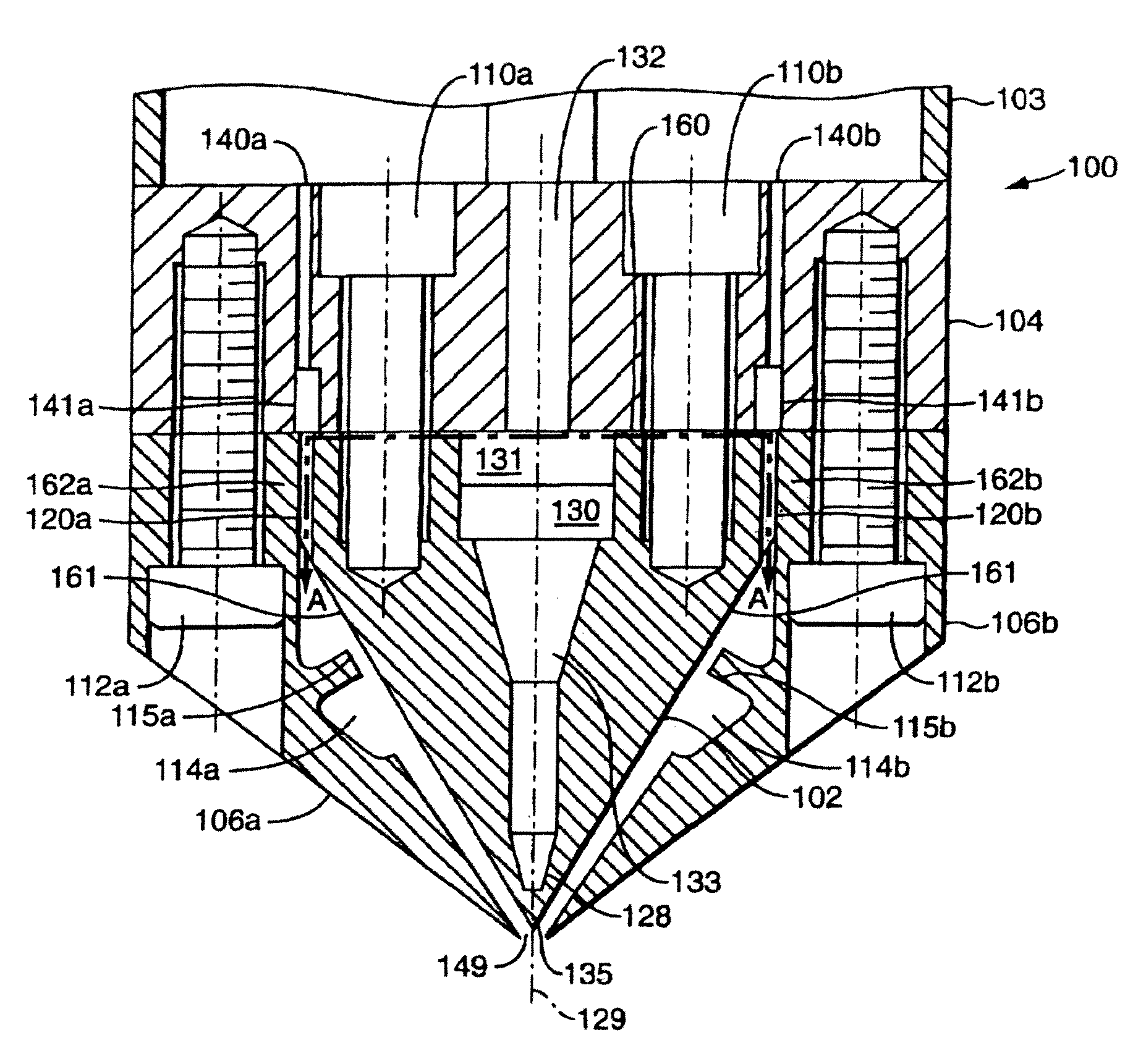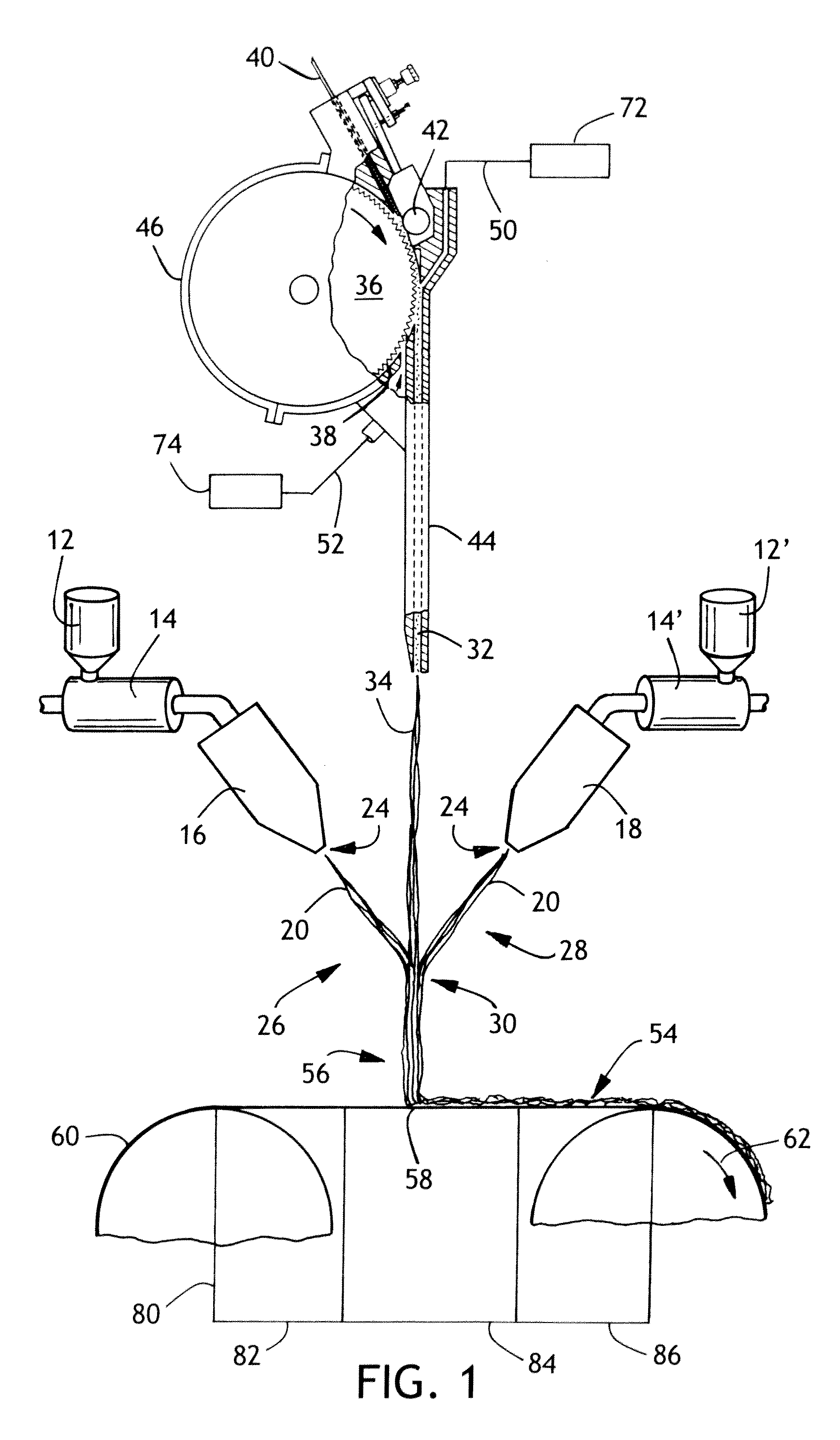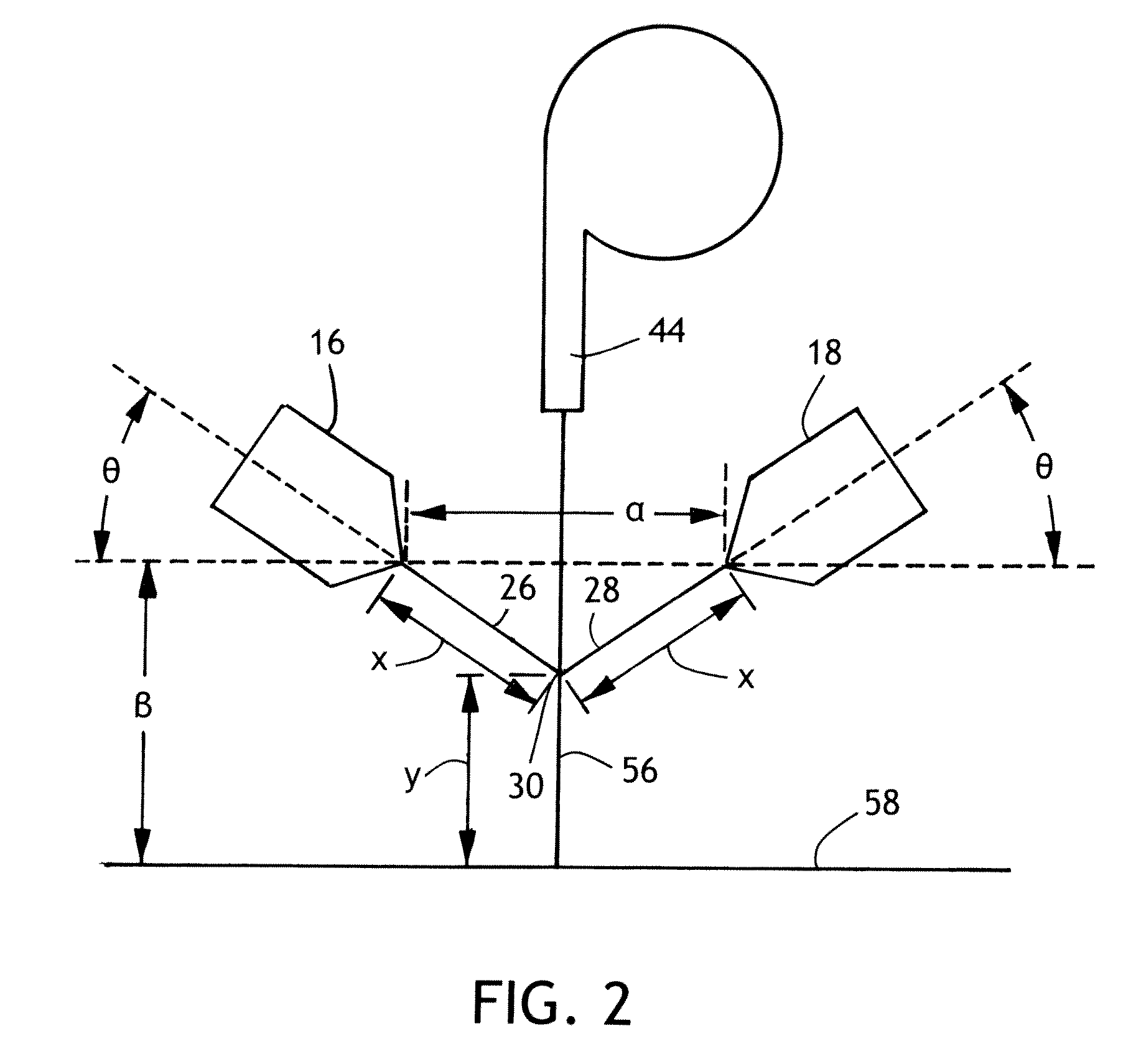Fibrous nonwoven structure having improved physical characteristics and method of preparing
a nonwoven structure and physical characteristic technology, applied in the field of fibrous nonwoven structure, can solve the problems of high degree of collapse when wetted, nonwoven web structure with very little mechanical integrity, etc., and achieve the effects of softer feel, improved physical characteristics and improved sheet squareness
- Summary
- Abstract
- Description
- Claims
- Application Information
AI Technical Summary
Benefits of technology
Problems solved by technology
Method used
Image
Examples
examples
[0126]Fibrous nonwoven structures containing wood pulp fibers and meltblown polypropylene fibers were produced in accordance with the process described above and in FIGS. 1-3. In the process, secondary pulp fibers, CF405 pulp commercially available from the Weyerhauser Company, are suspended in an air stream and contacted with two air streams of meltblown fibrous materials, Metocene MF650X, commercially available from Basell USA Inc., impinging the air stream containing secondary pulp fibers. The merged streams were directed onto a forming wire and collected in the form of a fibrous nonwoven structure. Exemplary embodiments A through N were prepared using a two-bank system with the process setup as described in Table 1. The various samples were prepared using different basis weights ranging from 30 to 75 gsm, different polymer throughputs ranging from 0.63 to 1.76 ghm (ghm-grams of polymer though each hole in the meltblown dies per minute) and 2.5 to 5.5 pounds of polymer melt per i...
PUM
| Property | Measurement | Unit |
|---|---|---|
| Length | aaaaa | aaaaa |
| Length | aaaaa | aaaaa |
| Fraction | aaaaa | aaaaa |
Abstract
Description
Claims
Application Information
 Login to View More
Login to View More - R&D
- Intellectual Property
- Life Sciences
- Materials
- Tech Scout
- Unparalleled Data Quality
- Higher Quality Content
- 60% Fewer Hallucinations
Browse by: Latest US Patents, China's latest patents, Technical Efficacy Thesaurus, Application Domain, Technology Topic, Popular Technical Reports.
© 2025 PatSnap. All rights reserved.Legal|Privacy policy|Modern Slavery Act Transparency Statement|Sitemap|About US| Contact US: help@patsnap.com



